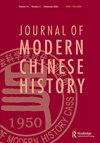Tianshui’s three treasures: water and soil conservation in wartime northwest China
IF 0.1
4区 历史学
Q4 HISTORY
引用次数: 1
Abstract
ABSTRACT In addition to examining how wartime imperatives shaped the agricultural research, demonstration, and extension programs undertaken by the Nationalist government’s Tianshui Water and Soil Conservation Experiment Area (the Experiment Area) after its founding in 1942, this article assesses the rural populace’s responses to these conservation measures. While the Experiment Area’s plans to construct terraces and ditches were not well suited to the socioeconomic and environmental conditions that existed in rural Gansu during the 1940s, its introduction of non-native tree and grass species to check water and soil loss met with an enthusiastic response from Tianshui’s populace. Water and soil conservation specialists aspired to rationalize human interactions with the environment as part of wartime efforts to develop the northwest, but to realize these goals they had to take socioecological realities in the region and the needs of rural residents into account. Wartime conservation’s environmental legacies, the article also shows, extended into the period after 1949.天水三宝:战时西北水土保持
摘要:本文除了考察战时需求如何影响了国民政府天水水土保持实验区(实验区)在1942年成立后所开展的农业研究、示范和推广项目外,还评估了农村民众对这些保护措施的反应。虽然试验区修建梯田和沟渠的计划不太适合20世纪40年代甘肃农村的社会经济和环境条件,但它为防止水土流失而引入的外来树种和草木得到了天水民众的热烈响应。水土保持专家希望将人类与环境的互动合理化,作为战时开发西北的一部分,但为了实现这些目标,他们必须考虑到该地区的社会生态现实和农村居民的需求。文章还指出,战时保护的环境遗产延续到了1949年后。
本文章由计算机程序翻译,如有差异,请以英文原文为准。
求助全文
约1分钟内获得全文
求助全文

 求助内容:
求助内容: 应助结果提醒方式:
应助结果提醒方式:


